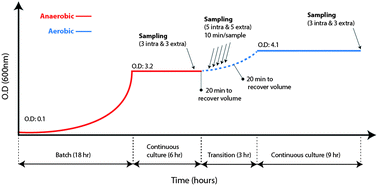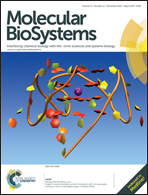Can we predict the intracellular metabolic state of a cell based on extracellular metabolite data?†
Abstract
The analysis of extracellular metabolites presents many technical advantages over the analysis of intracellular compounds, which made this approach very popular in recent years as a high-throughput tool to assess the metabolic state of microbial cells. However, very little effort has been made to determine the actual relationship between intracellular and extracellular metabolite levels. The secretion of intracellular metabolites has been traditionally interpreted as a consequence of an intracellular metabolic overflow, which is based on the premise that for a metabolite to be secreted, it must be over-produced inside the cell. Therefore, we expect to find a secreted metabolite at increased levels inside the cells. Here we present a time-series metabolomics study of Saccharomyces cerevisiae growing on a glucose-limited chemostat with parallel measurements of intra- and extracellular metabolites. Although most of the extracellular metabolites were also detected in the intracellular samples and showed a typical metabolic overflow behaviour, we demonstrate that the secretion of many metabolites could not be explained by the metabolic overflow theory.


 Please wait while we load your content...
Please wait while we load your content...